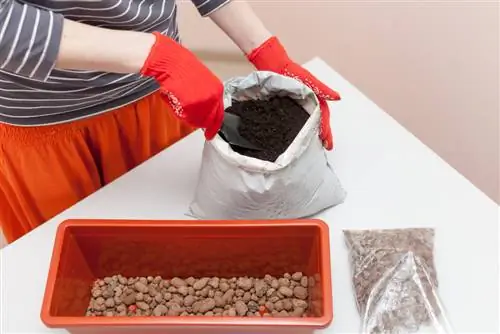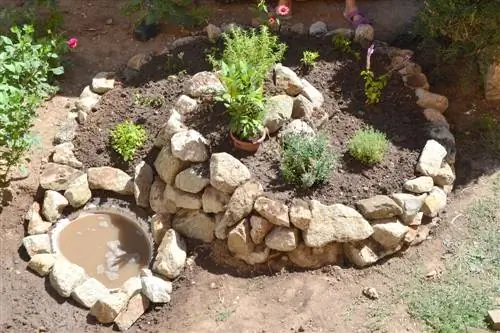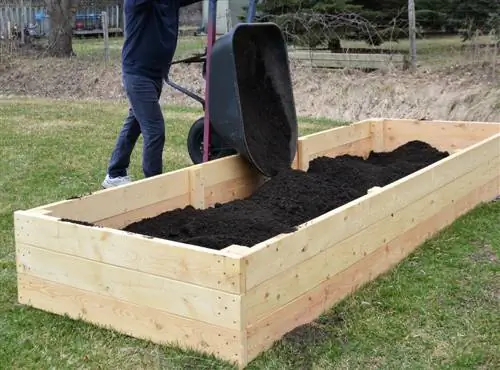- Author admin [email protected].
- Public 2023-12-16 16:46.
- Last modified 2025-01-23 11:22.
Large plant pots look particularly attractive in the hardware store. If the garden offers enough space, they are ideal as an eye-catcher. Unfortunately, it ends up looking a bit strange because the chosen planting is lost. So which plants should the gardener choose to achieve a balanced relationship between plants and containers? This article will tell you.

How do I fill large plant pots correctly?
To properly fill large planters, first create drainage: place a shard of clay over the hole in the ground, fill the bottom with gravel or expanded clay and cover this layer with a garden fleece. Then fill in garden soil and press it lightly.
Fill large plant pots correctly
Before you start choosing plants, you have to fill your plant pot. On the one hand, this is important for stability, and on the other hand, it prevents waterlogging or other harmful factors.
- Check whether the bucket already has a hole in it.
- Otherwise you will have to install drainage yourself.
- So that the hole doesn't become clogged with soil later, place a piece of pottery (€8.00 on Amazon) over it.
- Cover the bottom layer with gravel, expanded clay or small stones.
- The natural material stores water so that the substrate always remains a little moist.
- There is a garden fleece on top.
- Pull this up the inner wall of the bucket and cut off the protruding ends.
- Now fill the garden soil into the bucket.
- Press the substrate lightly.
- Now you can plant your pot.
- Make sure that the soil does not reach all the way to the top of the bucket so that water does not overflow when watering.
Planting large planters correctly
- You can choose between individual plants or a combination.
- For different plants, plant the large ones first.
- If you have the same plants, you should place them in rows so that the roots can spread better.
- Place climbing plants in the ground at a slight angle.
Great combinations are for example:
- Phormium
- Pennigkraut
- Strawberry plants
- Pearl Millet
- Spurweed
- Coneflower
- Dwarf maple
- Goldfinger
- various grasses
- white dahlias
- Begonias
- Ivy as a gap filler
- and yellow Cape baskets






